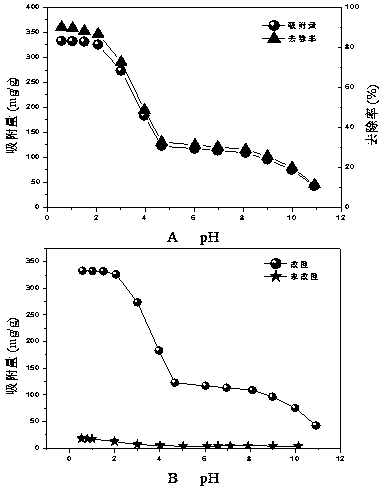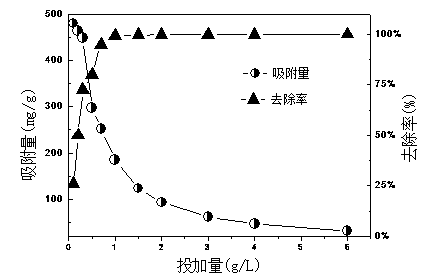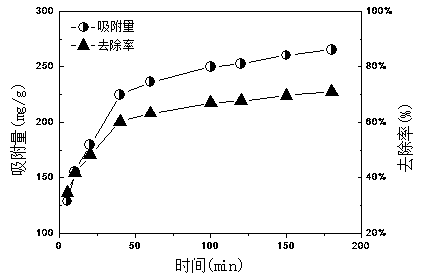Preparation method for modified walnut shell cation adsorbent
A cation adsorption and walnut shell technology, which is applied in chemical instruments and methods, adsorption water/sewage treatment, and other chemical processes, can solve the problems of difficult regeneration and high cost of activated carbon, and achieve high mechanical strength, high removal rate, and simple process Effect
- Summary
- Abstract
- Description
- Claims
- Application Information
AI Technical Summary
Problems solved by technology
Method used
Image
Examples
Embodiment 1
[0041] A kind of preparation method of modified walnut shell cationic adsorbent proposed, its preparation process comprises the following steps:
[0042] Step 1, preprocessing:
[0043] Purchase a small amount of walnuts at the local farmer's market, remove the pulp and shell, remove the inner skin and seed coat, boil in boiling water for 60 minutes, and remove the remaining pulp and skin. Soak in deionized water for 7 days and change it every day to wash away the sticky dust and residual pulp. After one week, bake it at 105°C for 24 hours, crush it with a plant sample grinder, and sieve it to get a particle size of 0.125-0.2 mm, and put it into a jar for later use;
[0044] Step 2, a modification:
[0045] Take 2 g of the walnut shell powder obtained in step 1, add 30 mL of sodium hydroxide solution with a concentration of 1.25 mol / L and 20 mL of epichlorohydrin solution, modify it in a constant temperature combined reactor at 40 ° C for 30 min, and wash it with deionized w...
Embodiment 2
[0049] Operation steps one and three are the same as in embodiment 1, and the difference in step two is modified as follows:
[0050] Take 2 g of the walnut shell powder obtained in step 1, add 15 mL of sodium hydroxide solution with a concentration of 1 mol / L and 20 mL of epichlorohydrin solution, modify it in a constant temperature combined reactor at 40 ° C for 30 min, and wash it with deionized water to medium properties, and vacuum-dried in an oven at 65°C for 3 hours, ground and sieved to obtain primary modified walnut shells with a particle size of 0.125-0.2mm;
Embodiment 3
[0052] Operation steps one and three are the same as in embodiment 1, and the difference in step two is modified as follows:
[0053] Take 2 g of the walnut shell powder obtained in step 1, add 45 mL of sodium hydroxide solution with a concentration of 1 mol / L and 2 mL of epichlorohydrin solution, modify it in a constant temperature combined reactor at 40 ° C for 30 min, and wash it with deionized water to medium properties, and vacuum-dried in an oven at 65°C for 3 hours, ground and sieved to obtain primary modified walnut shells with a particle size of 0.125-0.2mm;
PUM
| Property | Measurement | Unit |
|---|---|---|
| Particle size | aaaaa | aaaaa |
| Particle size | aaaaa | aaaaa |
| Particle size | aaaaa | aaaaa |
Abstract
Description
Claims
Application Information
 Login to View More
Login to View More - R&D
- Intellectual Property
- Life Sciences
- Materials
- Tech Scout
- Unparalleled Data Quality
- Higher Quality Content
- 60% Fewer Hallucinations
Browse by: Latest US Patents, China's latest patents, Technical Efficacy Thesaurus, Application Domain, Technology Topic, Popular Technical Reports.
© 2025 PatSnap. All rights reserved.Legal|Privacy policy|Modern Slavery Act Transparency Statement|Sitemap|About US| Contact US: help@patsnap.com



